Emergency Answers
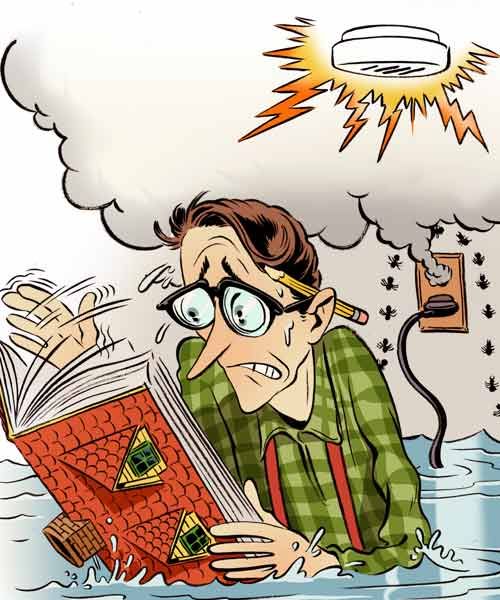
Our household troubleshooting guide will get you out of all-too-common jams around the house, whether they’re true emergencies or everyday annoyances.
1. Tighten a Stair Baluster
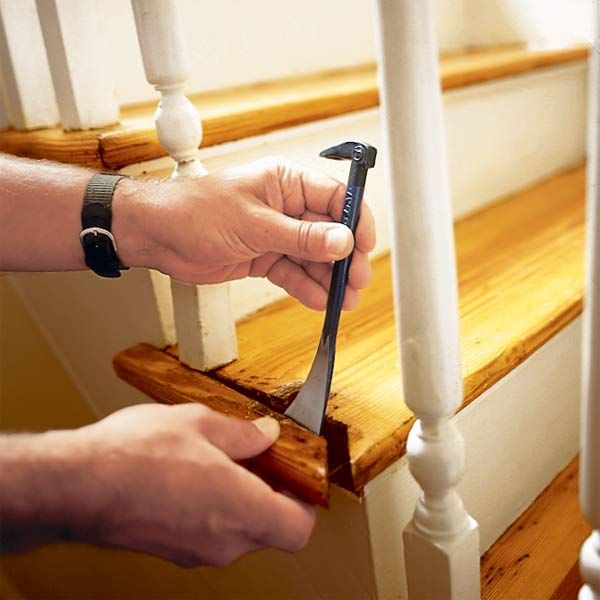
Use a thin flat bar to gently pry off the end cap on the stair tread, which will expose the mortise that holds the baluster. Insert a shim to push the baluster tight against the banister on top. Then reattach the tread cap.
2. Unclog a Caulk Nozzle
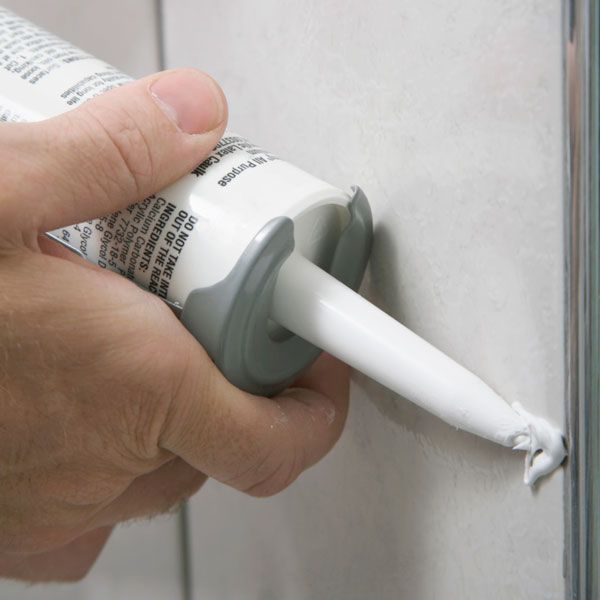
Chuck a drill bit into your driver and zip through the dried-up gunk in the tip.
3. Remove Porcelain-Sink Stains
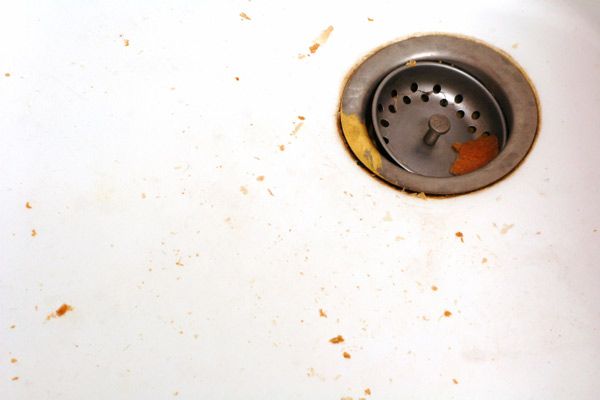
Start with toilet cleaner and scrub in circles. If that doesn’t work, try Bar Keepers Friend, which contains pumice, a mild abrasive. If that doesn’t work either, wet the sink and use a pumice stick; it’s the most aggressive technique that’s safe for porcelain. If that also fails? Sorry, you’ll need a professional refinishing.
4. Get Your Radiators to Heat Up All The Way
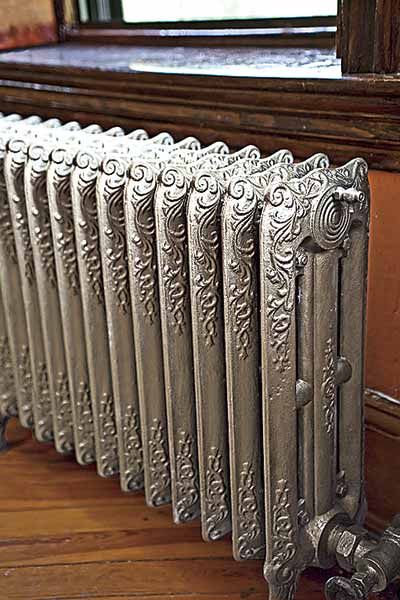
Trapped air can cause a hot-water or steam radiator to stay cold at the top. Releasing the air restores efficiency. On a hot-water unit, let the air out through the bleed valve, a square nut located near the top of the unit. Using either a special valve key or a flathead screwdriver (depending on your model), open the valve a quarter turn until you hear hissing. When water begins bubbling out, close the valve again. Steam units trap air if the valve’s air vent is clogged with paint or dirt (or not pointing up). With the heat off, clean out the little hole at the top of the valve with a wire, or just replace the whole thing. But with either system, warns This Old House plumbing and heating expert Richard Trethewey, “be careful with those valves. That radiator is way older than you are, and if those threads break, you’ve got a big problem.” For a stubborn valve, he recommends holding the outside nut with a crescent wrench as you turn the valve. You can also use WD-40, but not too much elbow grease: Better to leave a bubble than to bust a radiator.
5. Install a Motion-Detector Light
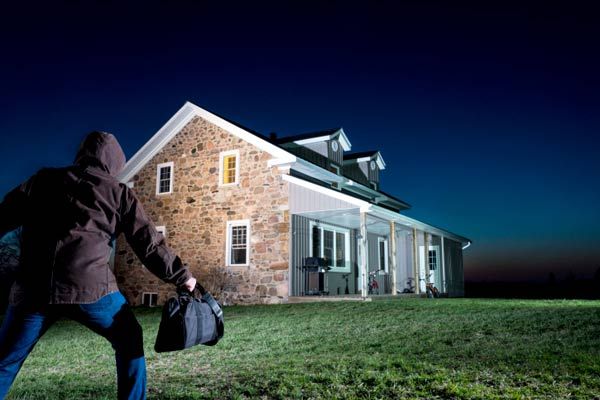
So long as there’s an existing light fixture, this job is a cinch: Kill the power, remove the old unit, and wire up the new one, says TOH‘s go-to master electrician, Scott Caron. “Hot” black wire to black, neutral white to white, and don’t forget to connect the green ground to the bare copper wire wound around the ground screw. “Really,” he says, “the most important thing is to buy a high-quality unit.” Sophisticated circuitry guards against false triggers, and you can adjust the sensor to ignore animals—or not. “I like to know when our neighborhood skunk is around so I don’t get surprised,” Caron says. Set the light to test mode and aim the sensor so that it doesn’t pick up traffic or pedestrians. Or late-night hot-tub action.
6. Fix Curling Wallpaper
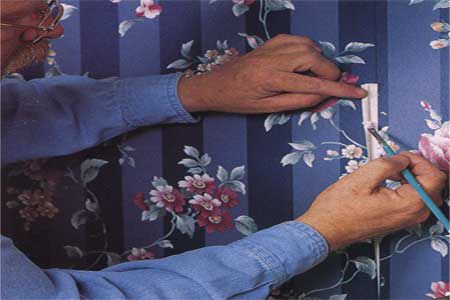
Use an artist’s paintbrush to dab wallpaper-repair adhesive on the wall, and press the paper in place with a seam roller. Remove excess adhesive from the paper with a damp sponge.
7. Use an Extension Ladder Without Breaking Your Neck
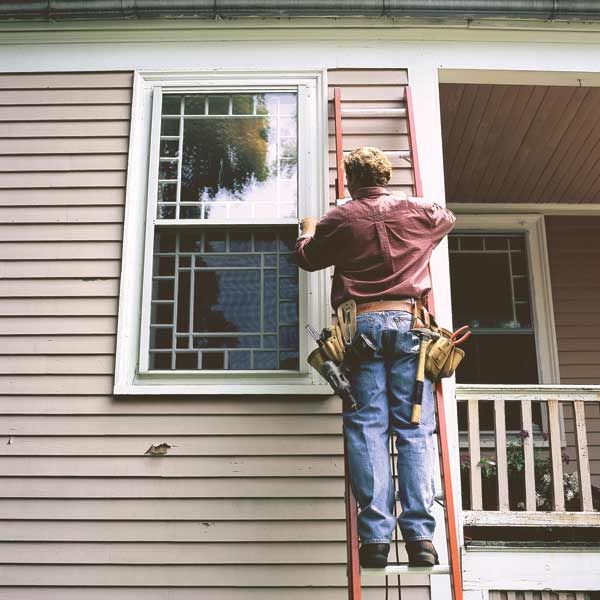
(1) Check that the ladder is leaning at a safe angle by standing with your toes touching the side rails and by grabbing the rung at shoulder height. If your arms are full extended and roughly parallel to the ground, the ladder is pitched properly, says Jeff Inks, executive director of the American Ladder Institute.
(2) Always maintain three points of contact with the ladder as you climb. “That can be two feet and one hand, or two hands and one foot,” says Inks. “And, yes, it means always carrying your tools and supplies in an apron or on a belt—not in your hands.”
(3) Do not overextend your ladder. A 32-foot ladder needs at least 3 feet of overlap. Longer ladders need up to 6 feet. Check your ladder’s label for details.
(4) Never stand on a rung that’s less than 3 feet from the top.
8. Pick The Right-Length Screw or Nail

TOH general contractor Tom Silva’s rule of thumb is to choose fasteners that are two and a half times the thickness of the material he’s attaching. So ½-inch drywall gets a 1¼-inch screw, for example, while ¾-inch plywood gets a 1⅞-inch screw or nail. Tack on another ½ inch, and angle the fastener if the base material is end grain, since it has less holding power. And, of course, always make sure the fastener won’t go clear through the substrate.
9. Get Firewood to Burn

It’s all in how you season it. Find a sunny outdoor spot away from wood structures, to keep insects from migrating. Lay two 2x4s on the ground to raise the pile, and stack the logs parallel to one another, loosely enough for air to circulate, says TOH landscape contractor Roger Cook. Cover only the top course with a tarp, to keep the logs dry while letting the stack breathe.
10. Fix a Wobbly Fence Post
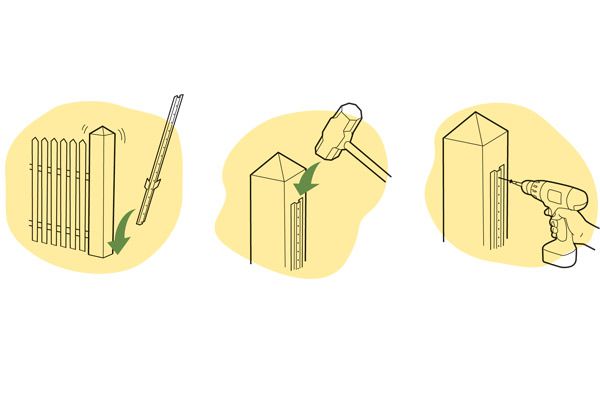
If the post is completely rotted out—usually because it’s been set in concrete, which traps moisture against the wood—you’ll need to dig it out and replace it. Otherwise, try this Tom Silva trick: Get a U-post, a metal stake designed for light-gauge wire fencing, and use a sledgehammer to drive it into the earth right next to your fence post, about 1½ feet down. Screw it to the fence post to add rigidity to your fence.
11. Patch a Hole in a Gutter

Grab some tin snips and cleanly cut away rusted or corroded material around the hole. Fashion a patch from flashing made of the same material—aluminum, copper, zinc, galvanized steel, or even vinyl—several inches larger than the hole. Glue the patch inside the gutter using a thick bead of roofing cement, available in caulking-gun tubes.
12. Hibernate Your Gas-Powered Lawn Equipment

Forget the old pearl about running the tank dry. Today’s gas contains ethanol, which can cause damaging moisture buildup in the engine even after it burns away. You’re better off leaving fuel in the tank after the season’s last mow. Just add a fuel stabilizer, such as Sta-Bil, and run the motor for five minutes to coat the internal parts; this prevents corrosion and makes it easier to start up the motor come spring.
13. Get Your Neighbors to Go Halvsies on a Privacy Fence

First, bone up on local zoning rules and covenants to make sure that you do, in fact, have the right to build a fence, advises Doug Brown, an estate attorney in Southport, Connecticut. “Your neighbors will see that fence every day, too, so they’re going to care what it looks like,” he says. And there’s your in. Approach your neighbor in a friendly manner, sharing your ideas. Then drop the hint that you’re happy to work together on a design and, ahem, a budget. Maybe they’d prefer a two-sided frame-and-panel number? Or a nice evergreen hedge? Anything besides the standard stockade, with the bulwark facing their yard, no?
14. Seal Out Air Leaks Around Outlet and Light-Switch Covers
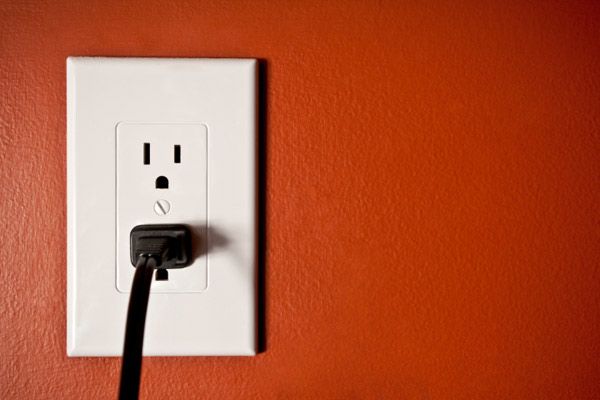
No, you may not squirt spray foam into an electrical box. The foam can lock in heat from the wires, creating a fire hazard. Instead, with the power off and the cover plate removed, caulk the seam where the electrical box meets the back of the wallboard or plaster, says energy auditor Paul Scheckel, author of The Homeowner’s Energy Handbook. Then get a foam gasket, sold for pennies at home centers, and place it around the receptacle before reinstalling the cover plate.
15. Get Rid of a Bee’s or Hornet’s Nest
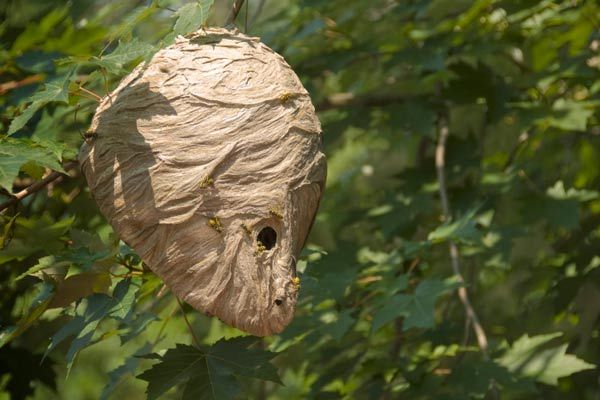
Under the cover of darkness, when the stinging pests are all tucked into their hive, soak its entrance with a jet-spray insecticide from a safe 10 to 15 feet away. If the hive shows no activity the next day, discard it. For carpenter bees, spray each hole they’ve bored in your house, “and expect it to be an ongoing battle,” says Tom Scollins, a longtime pest-control pro who’s now at Baltimore County Animal Control. If you have honeybees, look for a local beekeeper who might come and take the nest so they can live to pollinate another day.
16. Select The Right Finish Coat
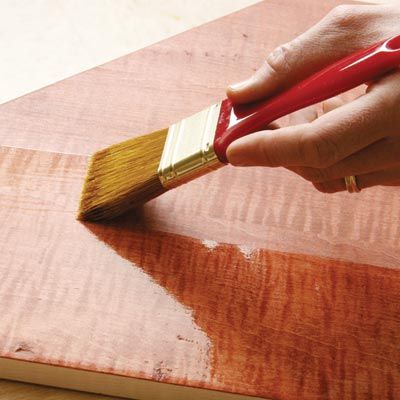
Oil-based clear finishes don’t adhere reliably over water-based stains. And although some water-based finishes will work over some oil-based stains, that’s a tricky call based on wood, climate, and other factors, says TOH master carpenter Norm Abram. The safest and surest choice is to stick with the same base—oil or water—for both the stain and the finish.
17. Get Rid of Invasive Weeds

Hand weeding won’t work on these guys because you’ll never get 100 percent of the roots out of the ground, so they keep coming back. The only effective solution is a systemic herbicide, such as Roundup. “The problem is, weeds are usually mixed in with garden plants and the spray will kill anything it touches,” says Roger Cook. “So I like to cut the weed down to the ground and, as soon as it leafs out again, paint the chemical onto the leaves using a foam brush.” Coat all of its leaves, and it will finally die, roots and all.
18. Measure Without a Tape Measure

Aside from memorizing the length of your stride, here are handy approximations to know:
• Dollar bill: 6 inches long
• Credit card: 2 inches wide
• Soda can: 5 inches tall
19. Calculate “Squares”
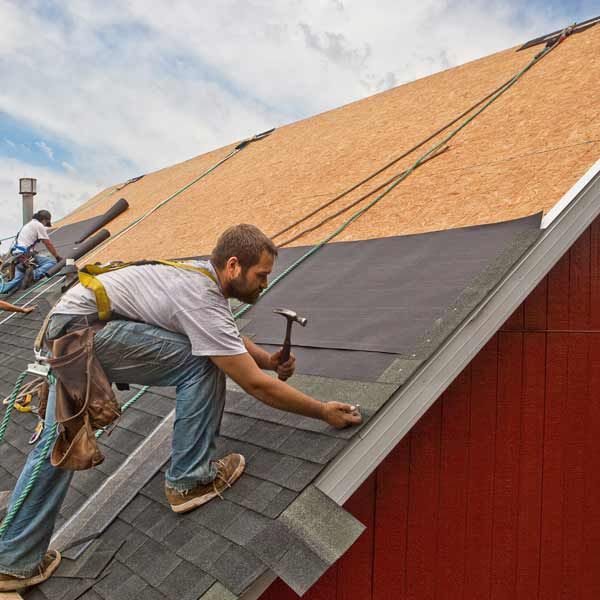
Many materials—from roofing to siding to flooring—are sold by the “square.” That’s the quantity required to cover a 100-square-foot area. Measure your square footage, divide by 100, and you’ll know how many squares you need.
20. Your Carbon Monoxide Alarm Goes Off
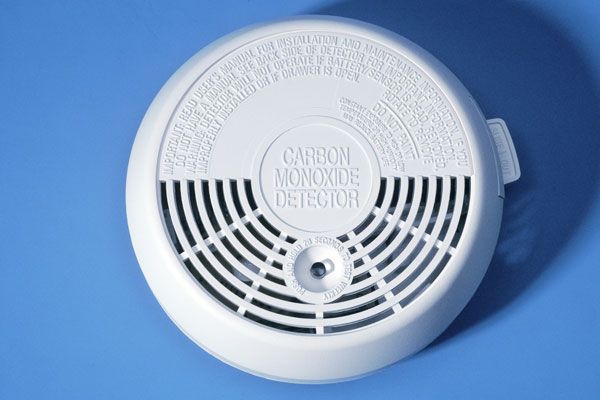
Immediately get to a source of fresh air—outside the house or at an open window or door. Then call 911. Emergency responders will use high-grade detectors to determine whether the alarm is genuine. If there’s really a leak, they’ll find and shut off the source of the gas and air out your place.
21. You Accidentally Mix Bleach and Ammonia

These compounds hide in all sorts of products that live cheek by jowl in the pantry—Tilex contains bleach and Windex has ammonia, for example—and combining them releases toxic chloramine gas. Exposure can cause severe lung trauma, but first it will make your throat and eyes burn, hopefully driving yout to head toward fresh air. Once outside, call the fire department, which will clear the air with high-powered fans.
22. You Get Wood Chips in Your Eye

Resist the urge to rub it, and don’t try to pluck out the debris. Instead, rinse your eye with water—ducking your head under the shower, hose, or tap—doing your best to open your eyelid. If that doesn’t flush everything out or you still feel irritation, visit the ER. A doctor may remove anything lodged in the eye using the medical version of a Dremel tool, a far better option than you and a pair of tweezers. Then you’ll be given antibiotic eyedrops. “A scrape of your cornea will heal in a few days—unless it gets infected,” explains Dr. Howard Mell, a spokesman for the American College of Emergency Physicians.
23. You Hear a Cracking Noise from a Branch Overhead
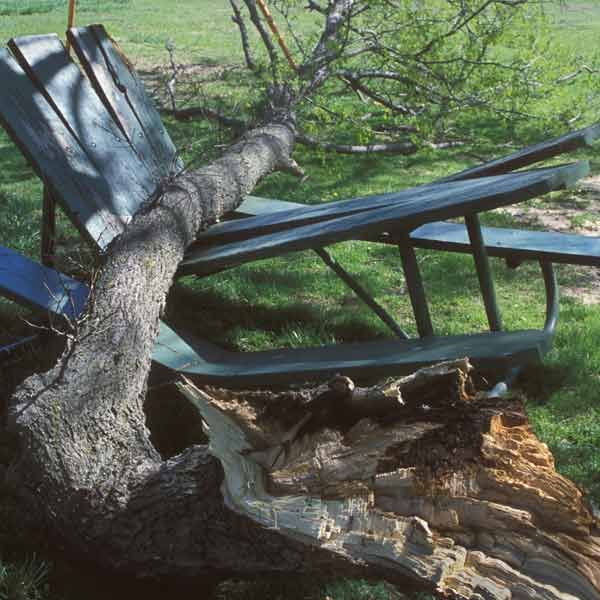
Do not gather your picnic leftovers or peer up into the tree to investigate the source. Run! Like heck—in the opposite direction of the sound if you have a sense of which part of the tree it came from.
24. You Spill Solvent, Acid, or Bleach on Your Skin
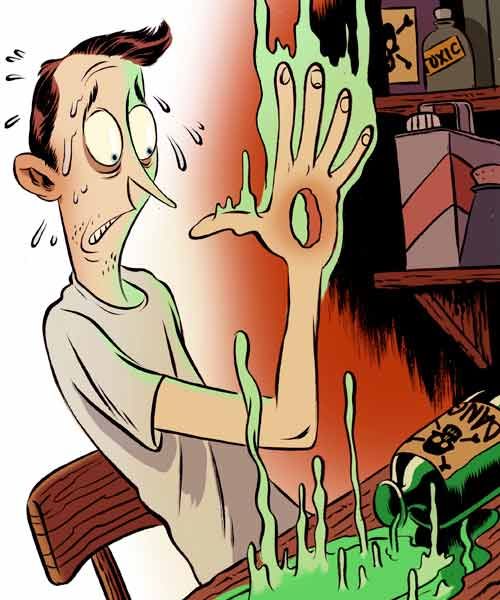
“Dilution is the solution to pollution,” says Dr. Mell, in a catchy little singsong. “For any chemical exposure, rinse the area under cool water for 15 minutes,” he says. In most cases, that’s all you need to do, but head to the hospital if you see a visible burn mark or if the exposed area includes your face, palms, feet, or groin. The size of the exposure may also force you to the hospital: If the area is larger than your two hands—2 or 3 percent of your body—you need medical attention.
25. You Smell Burning Near an Electrical Receptacle
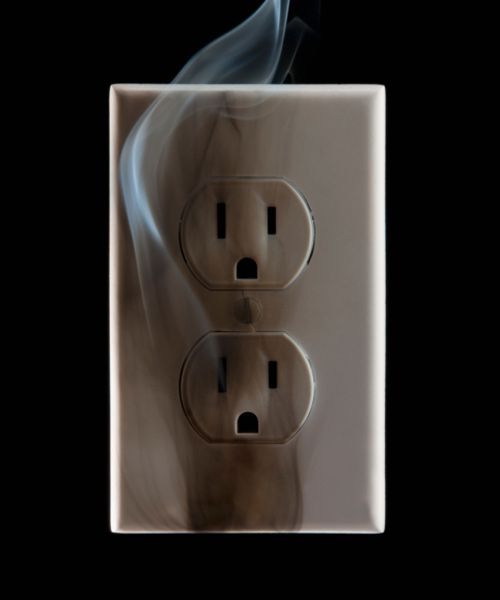
Trip its circuit breaker and unplug whatever’s in the outlet. Assuming the smell dissipates, call your favorite electrician for a nonemergency visit to investigate the cause. If the smell persists, however, you know the drill: Exit the house and call 911.
26. You Cut Yourself
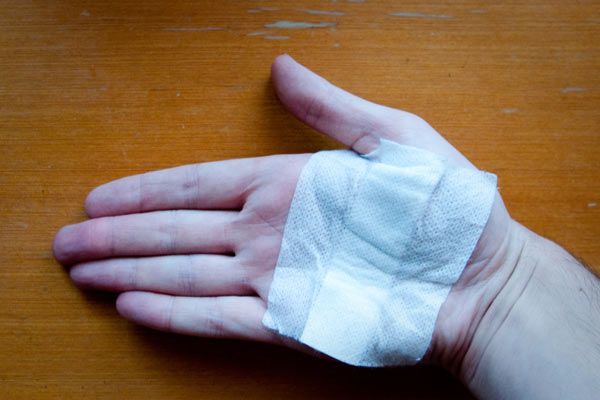
If there’s spurting, like in a B-horror flick, you’ve hit an artery and need an ambulance—now. While you wait, slow the bleeding with a tourniquet; loop a belt or cloth around the limb and twist it tight with a stick to clamp off the blood supply. If there’s no spurting, apply pressure to the wound. Don’t worry about searching for the cleanest possible material—just grab what you have and hold it against the cut. You can add fabric as the first compress becomes saturated, but don’t pull the first piece off the wound, because it could remove the initial clot. You need to call 911 only if the bleeding doesn’t stop within one to two minutes or you feel light-headed. “People get very freaked out by blood loss,” says Dr. Mell, “but picture the mess from spilling a 12-ounce soda. We don’t get worried until an adult has lost the equivalent of three to six cans.”
27. Install a Dimmer Switch
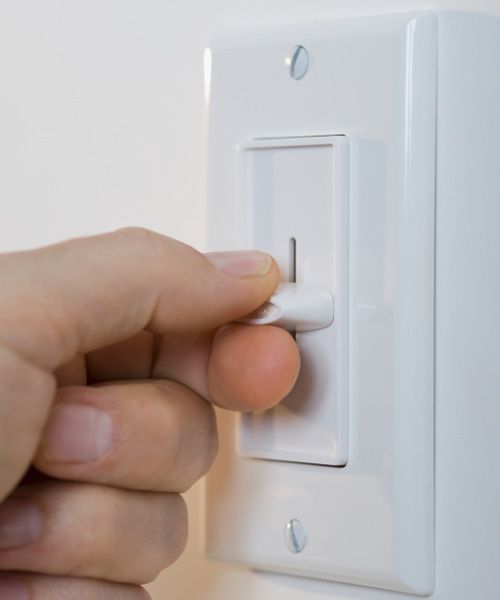
After you turn off the circuit’s power and pull the existing switch from the box, snap digital photos of the wire connections before disconnecting them. Then purchase a dimmer switch (single pole for one switch or a three-way if there are two or more) that is suitable for the type of bulb you use. Make sure it’s also rated for the lights you have on the circuit: Add up all the wattages and buy the lightest-duty unit that will cover the sum plus 10 percent. That’s because the higher the wattage rating, the larger the switch, and the high-power ones are often too big for old electrical boxes. With the snapshots as your guide, attach the new switch’s leads to the house wiring using wire nuts and electrical tape.
28. Clean Rust Stains from Concrete

We’re talking walkways and walls here, not polished floors and countertops, which have a hardened surface that resists staining. (Should you one day discover a rust stain behind the toaster oven, hit it with Soft Scrub and an abrasive pad.) The only way to remove rust stains that have worked their way into a slab is to (a) etch the area with muriatic acid, or (b) cut it out with a grinder, says Bob Merkt, of Kettle Moraine Professional Cleaners, in West Bend, Wisconsin. Then you have to patch in new concrete and wait for it to blend in over time.
29. Get Rid of Ants
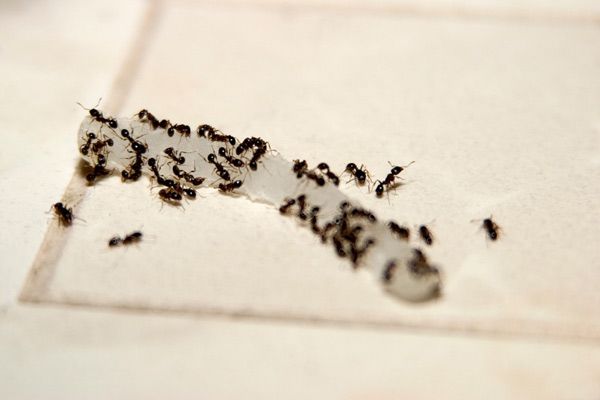
First off, don’t take the invasion personally. The ants are just as likely looking for water as for food, so their presence may have nothing to do with your slovenly ways. Infestations depend mostly on soil type and the proximity of the colony. Forget about spraying them with poison. Instead, set out bait that they’ll ferry back with them, killing off the entire colony. You can do that with ant traps from the home center. Or hire a professional to set out a buffet of more powerful gel bait. You don’t get the instant gratification of seeing them die, but after a week, you’ll have eradicated the hundreds of thousands of ants back in the colony. Nothing personal.
30. Use a Pressure Washer

“The secret to pressure-washing is to use the gentlest possible pressure,” says painter Mauro Henrique, a TOH TV veteran. Start with the lowest- pressure setting and either the green or yellow spray tip to minimize any surface damage. You can always ratchet up the pressure if necessary. Also, skip harsh bleach in favor ‘Ä®of a green product to protect any surrounding plants. Try D/2 Biological Solution mixed with an equal amount of water. With siding and roofing, never spray up at the bottom edge of a course; the water can dislodge shingles or get into the structure of the house.
31. Get Your Neighbor to Keep It Down

Forget about filing a complaint or calling in lawyers, says estate attorney Doug Brown, who’s turning down your good money in saying so. You may resolve the immediate situation, but the behavior will persist—with an extra dose of angry mixed in. “The only way you’ll get any real resolution is if you can convince your neighbor that he wants to change his ways,” says Brown. The better your relations are, the easier this task will be. (One more reason to always have a kind word to share on the street.) So don’t approach Mr. Ruckus with a confrontational attitude. Be pleasant but straightforward: “I’m sorry, but my 3-year-old keeps getting woken up at 5 a.m. by the barking. I’ve tried cranking up the white-noise machine, but it’s just not helping. Is there any way you can wait until 6 to let Sparky out?” Don’t expect change to happen immediately—it’ll take a few conversations—and don’t expect a 100 percent resolution. And if you live in an urban neighborhood, says Brown, “the thing you should expect? Some compromises on noise.”
32. Hang a Heavy Cabinet or Some Other Item
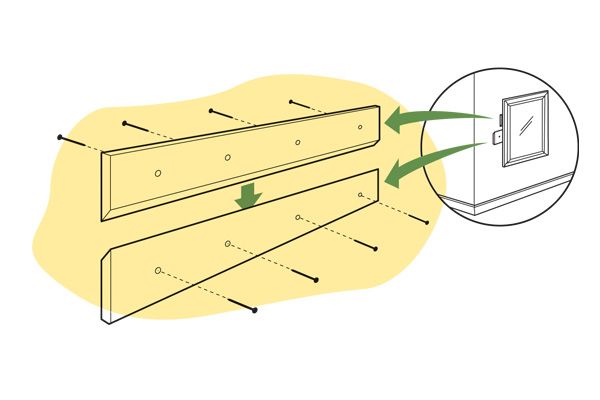
Adjust the blade of a table saw or a circular saw to 45 degrees, then rip a length of 14 in half. Use screws to attach the top half to the object being hung, with the bevel facing the object. Screw the bottom half to the wall at the studs, placed so that its bevel will interlock with the top one. Voila—you’ve made a French cleat.
33. Speed Up Your Compost
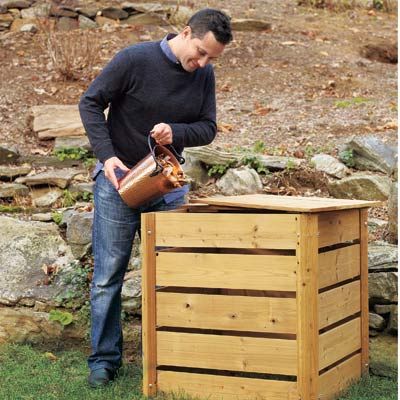
Mix in a bit of completed compost (from last season, the nursery, or a friendly neighbor) to your working pile. “It’s almost like sourdough starter,” says Roger Cook. “It brings in beneficial fungi that jump-start the process.”
34. Take Furniture Marks Out of Carpet
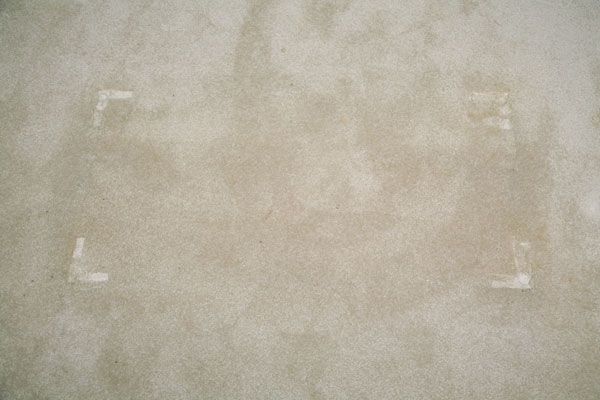
For nylon and wool, you can coax the indentation right out of the material. Use a laundry steamer to heat up the fibers, then fluff them up with a hard-bristle hairbrush or something called the Handi Groomer, a product made just for this purpose. “The process is a lot like teasing hair while blow-drying it,” says Doyle Bloss, product manager for HydraMaster, the company that makes truck-mounted carpet cleaning machines. Heat, moisture, and brushing will add volume to the carpet fibers.
35. Fix a Smoke Detector That Keeps Going Off

The two most common reasons a smoke alarm malfunctions (before it is a decade old and should be replaced anyway) are dust that has collected inside and nuisance triggers, such as cooking fumes or bathroom steam, says Judy Comoletti, of the National Fire Protection Association. Clean the unit first: Just remove the cover and vacuum it out. Replace the cover and press the test button to ensure that it’s working. If the problem persists, relocate the unit away from steam or smoke sources. And always cover it with plastic when you do renovations, to prevent more dust buildup.
36. Take Inside Measurements
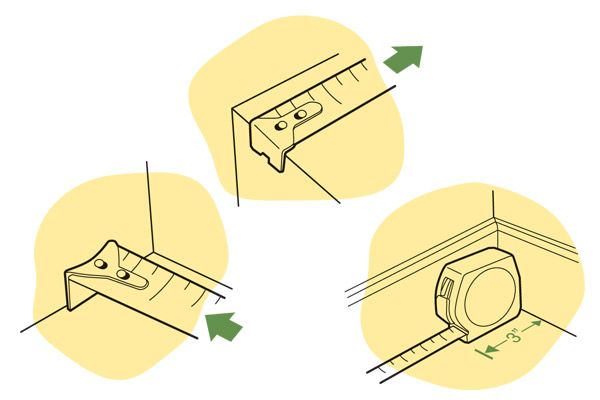
There’s a reason the hook on the end of your tape is loose on its rivets—and why the first inch is a few hashmarks shy of a load. When you put the hook over an edge and pull the tape taut, the hook shifts to make the first inch a full 16/16. When you push the tape against a wall, it slides in to compensate for the thickness of the hook, again giving you an inch for an inch. At the other end of an inside measurement, add the length of the tape measure’s box to the last number you can read on the tape.
37. Keep Birds from Nesting on Your House
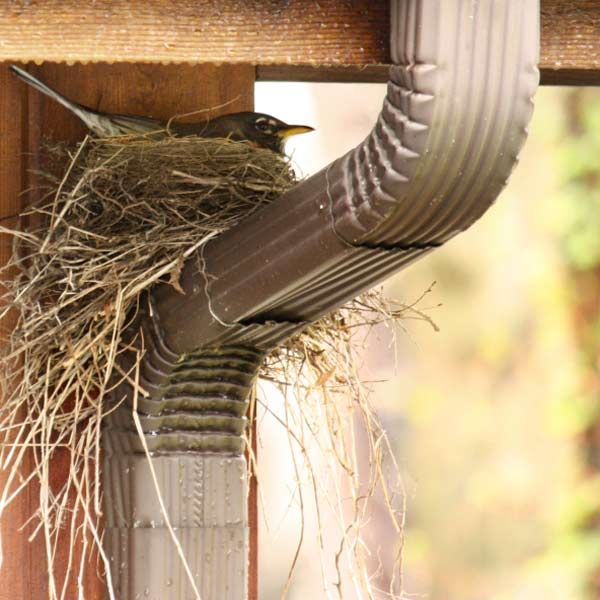
Pigeons and starlings aside, federal law prohibits disturbing a bird nest before the chicks fledge, says pest-control pro Tom Scollins. Once they’re gone, however, you can remove a nest and make the spot less attractive to future generations. “Birds are cavity nesters,” he says. “They look for spots that are protected from sun, rain, and predators.” Repair any openings in the fascia, or they’ll find their way in. They also flock toward gutter downspout returns that are near horizontal. You can curb that urge by replacing the downspouts with steeper runs. For ledges and cozy spots you can’t eliminate, install bird spikes, but make sure to get the right size for the birds you’re dealing with. “Small birds will nest between large spikes, and large birds will nest right on top of small spikes,” Scollins says. So first identify the species, then order spikes sold specifically for those birds.
38. Level a Hump or Hollow in The Lawn
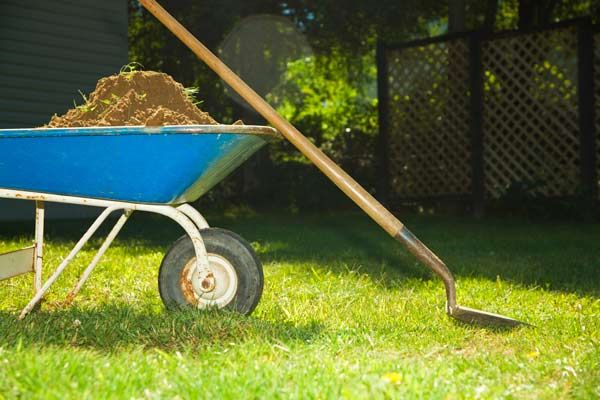
Use a sharp shovel to slice an X in the lawn over the uneven spot, says Roger Cook. Peel back the four triangles of turf to expose the soil underneath, using a utility knife to help slice the roots as you go. Then either dig out the hump—usually a rock or an old stump—or fill the divot with topsoil and compact it. Lay the lawn back in place, and water daily for a week or so.
39. Repair Dings on Outside Drywall Corners
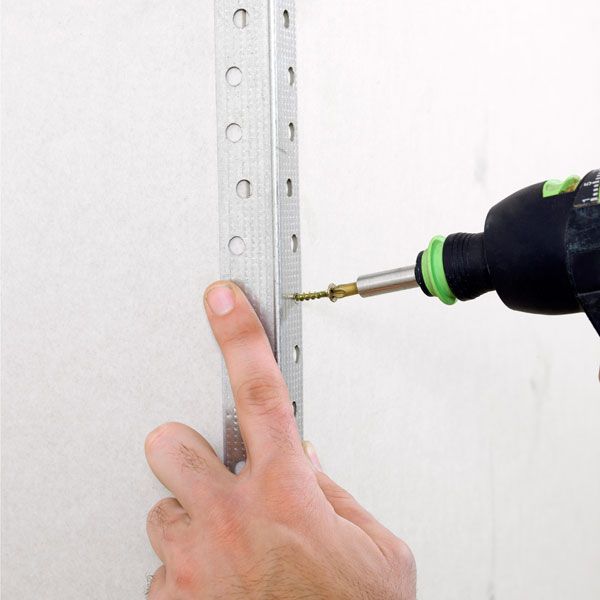
If the metal corner bead is badly damaged, you’ll need to tear it out and replace it entirely. For minor dings, Tom Silva suggests trying to sand out the uneven spot with standard 100-grit paper and a wood block. Then apply several coats of joint compound to resculpt the corner.
40. Remove Brown Spots on a Painted Bathroom Ceiling

Those unsightly blotches are mildew caused by humidity in the bathroom. Kill it with a standard bleach-containing bathroom cleaner (which thou shalt not mix with Windex, as per Skill No. 21), then prep the ceiling and repaint it. Prime with a sealer primer, such as Kilz, to cover the stain. Finish with a premium bathroom paint that contains a mildewcide to prevent any new growth. Then, let your vent fan run for 20 minutes after every shower.
41. Troubleshoot a Fixture That Keeps Blowing Bulbs
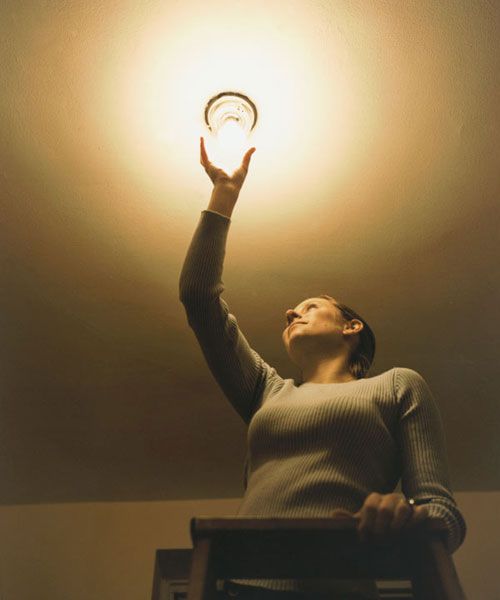
With the power off, run through this decision tree from electrician Scott Caron:
(1) Is there black around the socket?
If No, go to (2). If Yes, replace the fixture. It’s likely been “overlamped,” meaning that 100-watt bulbs, say, were used in a 60-watt-max socket.
(2) Check whether the tab at the bottom of the fixture is pressed down.
If No, go to (3). If Yes, that could be causing a short. Gently lift the tab with a flathead screwdriver back to its original position.
(3) Does the tab look corroded?
If No, go to (4). If Yes, clean with an emery cloth to clear the way for a better electrical connection.
(4) Plug a digital multimeter into a receptacle on the same circuit and see if you’re getting more than 120 volts.
If No, go to (5). If Yes, the extra juice is blowing the standard-bulb filaments. Buy a rough-service or 130-volt bulb.
(5) Is there a kid’s play space or bedroom overhead?
If No, go to (6). If Yes, excessive vibration could be breaking the filaments. Buy a rough-service bulb.
(6) If all else fails, swap in an LED bulb (making sure to replace any dimmer, too, with an LED-friendly unit). These solid-state illuminators aren’t bothered by excessive voltage or vibration, and their low energy consumption won’t tax an old socket.
42. Safely Dispose of Fireplace Ashes
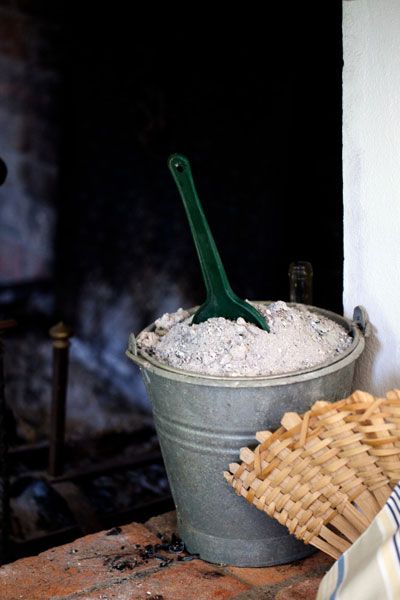
Do not remove the ashes—or close the damper—until at least 12 hours after a fire has burned out. Then skip the ash dump that may be built into the fireplace, which only postpones the cleanup and can potentially leak fumes into the house if the chimney is old. Instead, use a hearth shovel to transfer the ashes into a metal container with a cover. “Move that outside and away from the house and let it sit for a couple of weeks, because coals can smolder for a long time,” says Judy Comoletti, of the National Fire Protection Association. Then douse the ashes with water and sprinkle them over your lawn and non-acid-loving garden plants to add nutrients and raise pH levels. You can even mix the ash into your compost pile to help maintain a neutral pH and encourage the breakdown of organic materials.
43. Thaw a Frozen Pipe
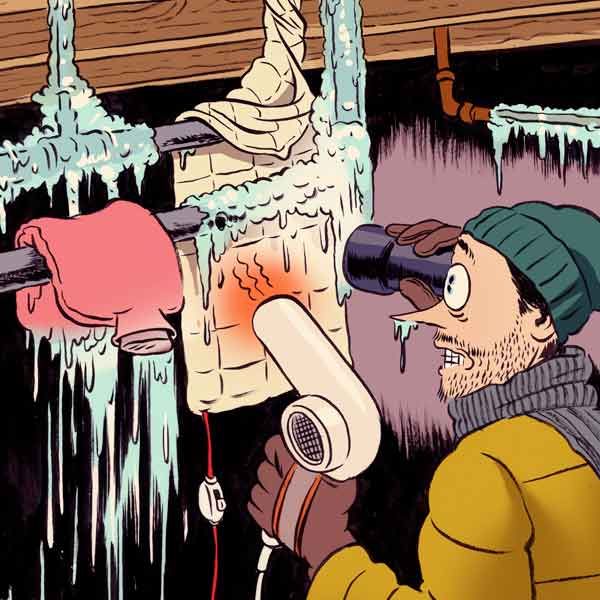
This is not the time to break out the blowtorch. It’s a fire hazard—remember? Anyway, just about any other household heat source will do, from a hair dryer to a heating pad to a space heater pointed in the right direction.
44. Free a Jammed Garbage Disposal

Your disposal came with a key designed for turning it via a hole in the underside when it gets stuck (the key is essentially a hex key wrench, which will work just as well). But that won’t give you enough torque to clear a major jam, says Richard Trethewey. “Turn off the power at the breaker, remove the rubber splash guard, and insert two broomsticks into the drain opening at cross angles,” he says. Give those a spin and you’ll break the chicken bone or whatever’s causing the jam. Then check that you didn’t also loosen the disposal from the sink, and retighten if necessary.
45. Calculate How Many Bags of Mulch You Need

Roger Cook buys mulch in bulk, and he can tell you that one cubic yard covers 100 square feet at 3 inches deep. But bagged mulch is sold by the cubic foot, so here’s the conversion: One cubic foot is one twenty-seventh of one cubic yard. A bag containing 2 cubic feet, therefore, will cover about 7 square feet at 3 inches (100 √∑ 27 2 = 7.4).
46. Touch up Flat Paint

This is one of the trickiest repairs to pull off because the new paint tends to stand out from the rest of the wall. Your best bet is to use a foam brush or roller, says painter Mauro Henrique. “Use vertical strokes only—and try to apply the thinnest possible coat,” he says.
47. Paint a Ceiling
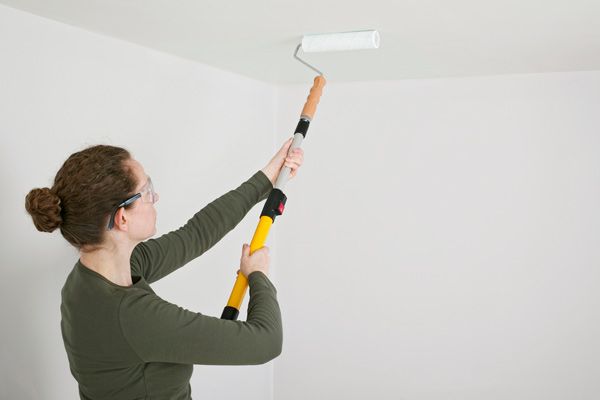
Stand on a ladder to cut in the edges, then stand on the floor and use a roller on an extension pole to fill in the field. Keep your roller fairly dry by rolling it over the paint pan’s ridges a few times after loading it up, to avoid getting dripped on. Apply a second coat, rolling in the opposite direction to catch any holidays from the first pass.
48. Place Smoke and CO Detectors
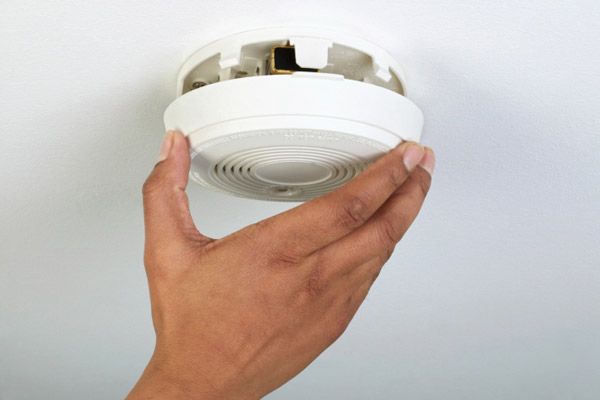
Install smoke alarms on the ceilings, at least 4 inches from any wall and well away from windows and HVAC vents. You should have one:
• in every bedroom
• outside each sleeping area
• on every finished level of the house, plus the basement.
Carbon monoxide detectors need not mount on the ceiling. They can go anywhere in a space, including at receptacles (plug-in units save the effort of replacing batteries every six months). Put one on each level of the house, including the basement but not the attic. For both types of detector, write the install date on the inside of the cover with permanent marker. That way, you’ll know when 10 years is up on your smoke detectors and it’s time to replace them because the sensors are no longer reliable. With carbon monoxide detectors, follow the manufacturer’s guidelines for how often they should be replaced.
49. Fix a Popped Drywall Screw or Nail
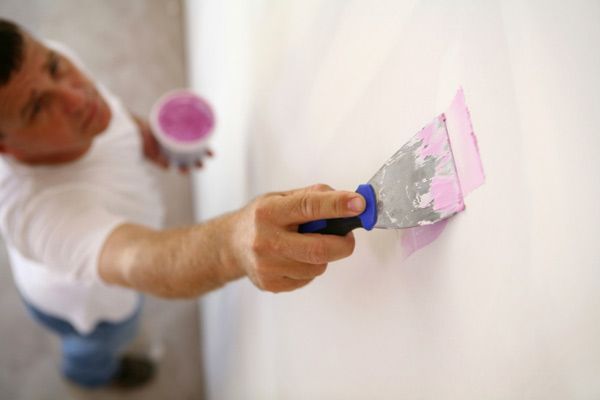
Clean out the screwhead with a scratch awl, and, if it’s catching a stud, use a cordless drill/driver to re-sink it. If it was a miss, back out the screw and use a new one to pin that section of drywall down at the nearest stud, just deep enough to hide under a thin layer of joint compound. Use the right fastener for the job: 1¼-inch drywall screws for ½-inch drywall, 1½-inch drywall screws for fire-rated or ⅝-inch drywall, and fine threads for steel framing. Nail pops are a different story. Sink a drywall screw into the stud several inches above and below the bump, then use a utility knife to cut around the loose nail. Use a cat’s paw to remove the nail, levering against a putty knife to protect the wall. Then, for any of these fixes, apply several fresh coats of joint compound, sanding between coats, and prime and paint the spot.
50. Cut in a Paint Job
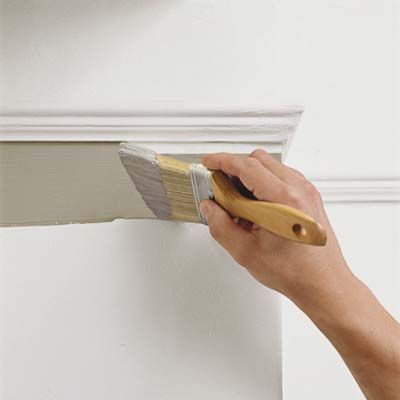
Paint the trim first, then cut in the wall paint against it—because that’s a far easier cutting-in job than the other way around, says Henrique. Use a high-quality angled sash brush to cut in the perimeter of one wall, then roll that wall while the brushed paint is still wet, before moving to the next surface. Bring the roller as close to the edges as possible to cover your brush marks.
51. Place Lamps for Task Lighting

The rule of thumb is the same for any task lighting, whether it’s a table lamp on your nightstand or a floor lamp by your favorite reading chair, a sconce over the bathroom vanity or a pendant over the dining room buffet: “You want the bottom of the shade at about the height of your chin when you’re using the light,” says Bruce Yarnell, an architectural lighting designer in Shawnee, Kansas. That way you’re not looking up at the bare bulb, and the light is shining on your work surface. So figure out where your head will be when you’re lying in bed reading, sitting in your club chair, or cutting pie at the buffet, and plan the height of your light accordingly. If you and your spouse are very different heights, don’t set paired lights at mismatched heights. Do what’s always best in a marriage: “Compromise and go for the middle ground,” Yarnell says.
52. Clean Window Screens
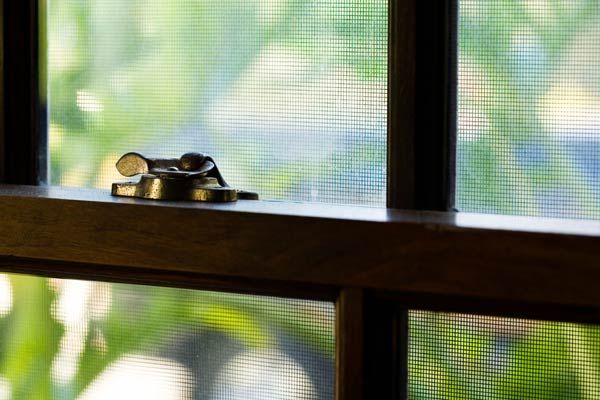
Whether the mesh is bronze, fiberglass, or nylon, the same screen-cleaning technique is used by Bob Merkt, of Kettle Moraine Professional Cleaners: First, vacuum both sides with a brush attachment; then clean with a sponge and a standard household cleaner, such as Formula 409, Fantastic, or Spic and Span. Don’t apply too much pressure, as this can detach the screen from the frame. If possible, do the cleaning in a bathtub full of hot water, using a bath mat to protect your tub’s finish. Rinse off the screens under the shower.
53. Clean a Greasy Range-Hood Filter
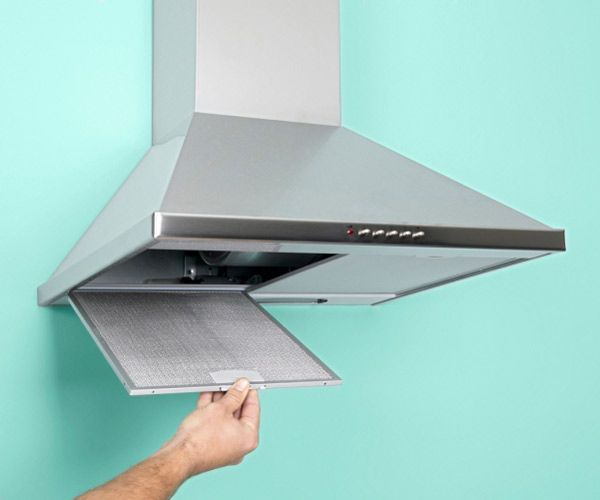
Run it through the dishwasher. But if it’s very dirty, says Merkt, just go buy yourself a replacement filter. “It’s not worth the time and effort to clean a badly clogged one,” he says.
54. Remove Snow from Drooping Arborvitae

Don’t yank, shake, or bang the branches—you can crack the frozen limbs, says Roger Cook. Wait until the weather warms enough that things aren’t iced up, then use a broom handle to brush off the snow. To prevent such problems in the future, tie together multistemmed evergreens with ProLock, a giant cable tie for trees.
55. Patch a Dead Spot in Your Lawn
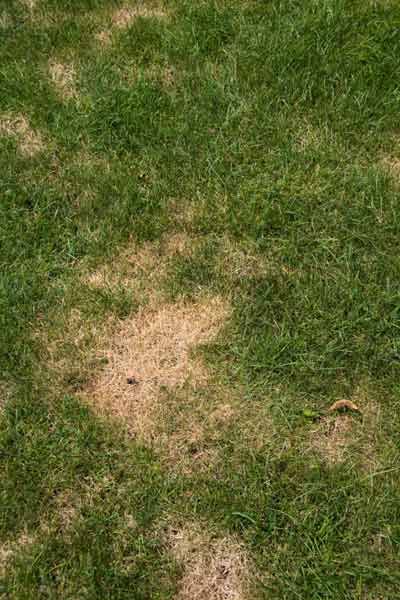
Spreading some seed, watering it, and thinking happy thoughts isn’t going to work, says Roger Cook. You need to get at the root of the problem—whatever is causing the grass to die. Most likely, it’s poor soil. Dig it out and combine it with compost, then spread seed and starter fertilizer. Better yet, cover the area with sod that you’ve cut out of a mulch bed or some other unwanted area.
56. Prune a Flowering Shrub
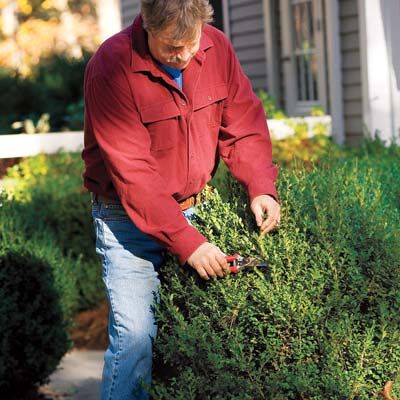
To avoid snipping next year’s buds, prune right after the last blooms have faded. Use a bypass pruner to leave stems at varying lengths, which creates a natural look. Make each cut at a junction so that there’s a branch or leaf remaining at the end of every stem.
